|
|
Кацусика Хокусай. Тридцать шесть видов Фудзи: № 1. Мост Нихонбаси в Эдо冨嶽三十六景 江戸日本橋Nihonbashi in Edo (Edo Nihonbashi), from the series Thirty-six Views of Mount Fuji (Fugaku sanjūrokkei)Artist: Katsushika Hokusai (1760–1849)Period: Edo period (1615–1868)Date: ca. 1830–32
Views of the central district of old Edo such as this are frequently characterized by three motifs: the arc of Nihonbashi (literally, "Bridge of Japan") together with the tiered roofs of Edo Castle and the distant Mt. Fuji. In addition to being the first stage of the Tōkaidō, Nihonbashi's distinctive form and prominent location earned it the importance of a symbol of the capital city. In this composition, Hokusai's radical cropping of the foreground bridge has the effect of thrusting the viewer directly into the bustling crowds of townsmen. (The Metropolitan Museum of Art)
For this view of Nihonbashi, or Japan Bridge, Katsushika Hokusai used an exaggerated Western-style perspective to create a daring and expressive triangular composition. The artist only hints at the famous bridge, which is the first station of the fifty-three stations of the Eastern Sea Route (Tōkaidō) connecting Edo (present-day Tokyo) and Kyoto, through a metal-capped pole in the center of the print. The bridge is teeming with workmen, vendors, and porters. In the middle ground, storehouses filled with wealthy merchants’ goods line the river. The shogun’s castle, a symbol of military government, sits at the apex, with Mount Fuji, the highest mountain in Japan and the subject of worship by ascetics, looming high above in the distance. (artgallery.yale.edu)
Nihonbashi Bridge was the most important transportation center in Edo, the point where two major highways converged and diverged – the Tökaidö and Kiso roads connecting Edo and Kyoto. Build in 1602, this arched wooden bridge of 154 feet spanned the Nihonbashi River, one of many small tributaries that emptied into the Sumida River. Reconstructed several times since then, today it is a stone bridge over the reclaimed river. In the city of Edo, a network of rivers and canals transported goods and people. Stores, wholesalers, storage buildings, and houses lined the riverbanks. In this print we see the backs of the stores, where boats docked and workmen unloaded goods. Some stores have their signs on the walls of the buildings. Today Nihonbashi is Tokyo’s business center, with its banks, countless shops, and major department stores. In this print, Hokusai chooses to view Mount Fuji form this busy city center. The Nihonbashi Bridge, which cuts across the foreground of the picture horizontally is crowded with people. Hokusai’s study of Western-style perspective is obvious: a pseudo-perspective in which the buildings on the riverbanks merge into a vanishing point far in the distance, where the river disappears and houses and boats diminish in size. In the upper left, over the horizon, Mount Fuji reveals its peak. Just below the horizon, at center, rise the buildings of the shogun’s Edo castle. The key-block was printed in blue. (The Asian Art Museum of San Francisco, HOKUSAI AND HIROSHIGE – Great Japanese Prints from the James A. Michener Collection, Honolulu Academy of Arts: The Asian Art Museum of San Francisco, 1998 Page 85. Cat. 36)
Nihonbashi (Japan Bridge) was the central transportation hub for the city of Edo, with the major routes of the Tökaidö (East Sea Road) and Kiso Road converging at this point. The area remains a commercial and financial district in modern Tokyo, and is home to many of Japan’s most important banks and department stores. The bridge itself was first built in 1602, with several reconstructions during the Edo period that ultimately resulted in the stone bridge still standing today. Hokusai dramatically crops the bridge in the foreground, conveying a sense of frenzied activity as merchants, travelers, and other Edoites struggle to cross. Beyond the bridge, the backs of shops and warehouses recede using Western perspective to Edo Castle (now the Imperial Residence) in the background, with Mount Fuji rising to the left. Boats full of merchandise move up and down the canal, while workmen wait along the bank to unload their cargo. “Hokusai’s Summit: Thirty-six Views of Mount Fuji” (09/24/2009-01/06/2010)
Мост Нихонбаси в Эдо
Мост Нихонбаси широко известен по всей Японии как отправной пункт или точка отсчета расстояния в стране, а также как центр города Эдо. В «Собрании изображений достопримечательностей Эдо» имеется запись, которая точно передает атмосферу, царящую в Эдо: «Толчея на мосту и под ним. Непонятно, кто знатный, кто беден, а просто бесконечный поток людей. Под мостом проплывают рыбацкие лодки, на которых что-то перевозят… Шум и грохот не смолкают до самых сумерек».
Хокусай концентрирует внимание на центральной части моста, обращенной прямо к зрителю, срезая изображение переднего плана кромкой листа. Гравюра является классическим образцом, свидетельствующим о том, что Хокусай знал и широко использовал европейский прием линейной перспективы. С переднего плана, вдоль берега реки справа и слева уходят ряды складских строений, постепенно уменьшаясь по мере удаления.
На дальнем плане, за мостом виден замок Сэндзирода, который возвышается над другим мостом Ицукокубаси, видимым в центре композиции у самой точки схода. В левой верхней части, почти на горизонте виднеется конус Фудзи с белоснежной вершиной. Перед мостом на правом берегу раньше был рыбный рынок, но на этой гравюре он не изображен.
Точка зрения Хокусая находится как бы над мостом. Следует отметить, что в наряду с заимствованными европейскими он использует и национальные живописные приемы. Например, на горизонте справа Хокусай изобразил белые, вытянутые облака, закрывающие часть пространства, прием, взятый из школы Ямато-Тоса.
Katsushika Hokusai. Nihonbashi in Edo, from the series Thirty-six Views of Mount Fuji
Katsushika Hokusai. Nihonbashi in Edo, from the series Thirty-six Views of Mount Fuji
Katsushika Hokusai. Nihonbashi in Edo, from the series Thirty-six Views of Mount Fuji
Все 46 гравюр серии «Тридцать шесть видов Фудзи» | Thirty-six Views of Mount Fuji | 富嶽三十六景 | Fugaku Sanjūrokkei
9 сентября 2021, 9:56
0 комментариев
|
Партнёры
|

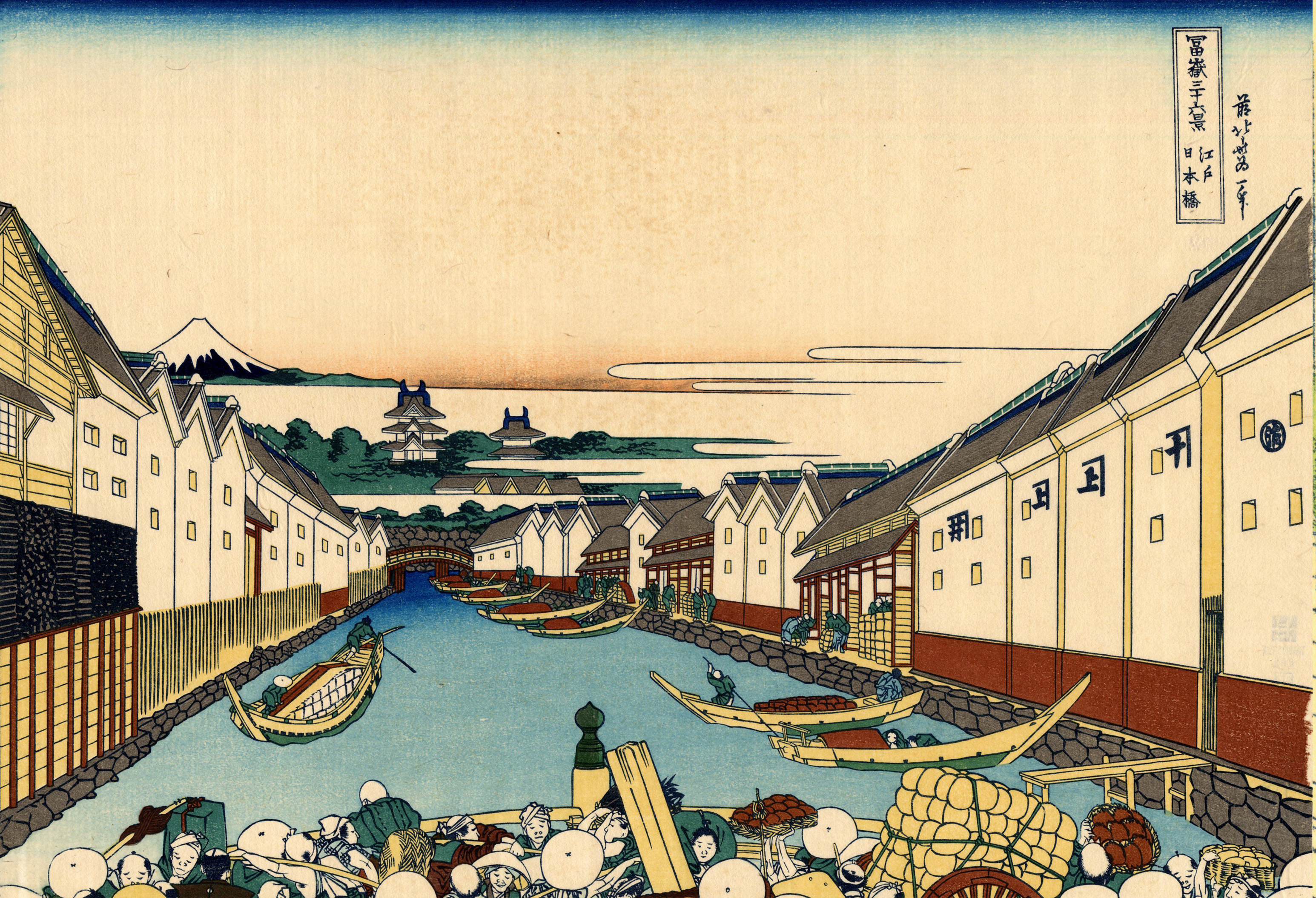
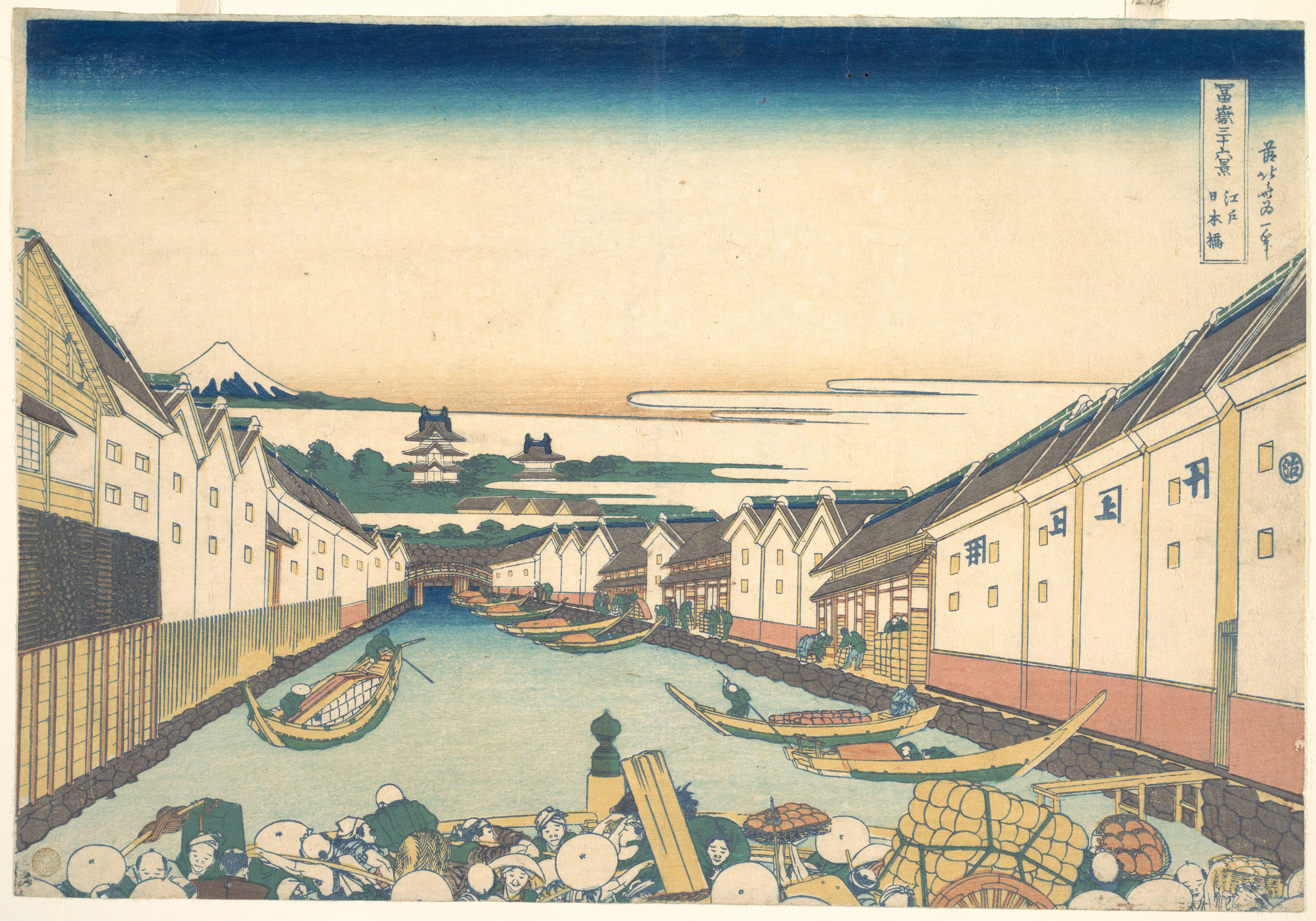
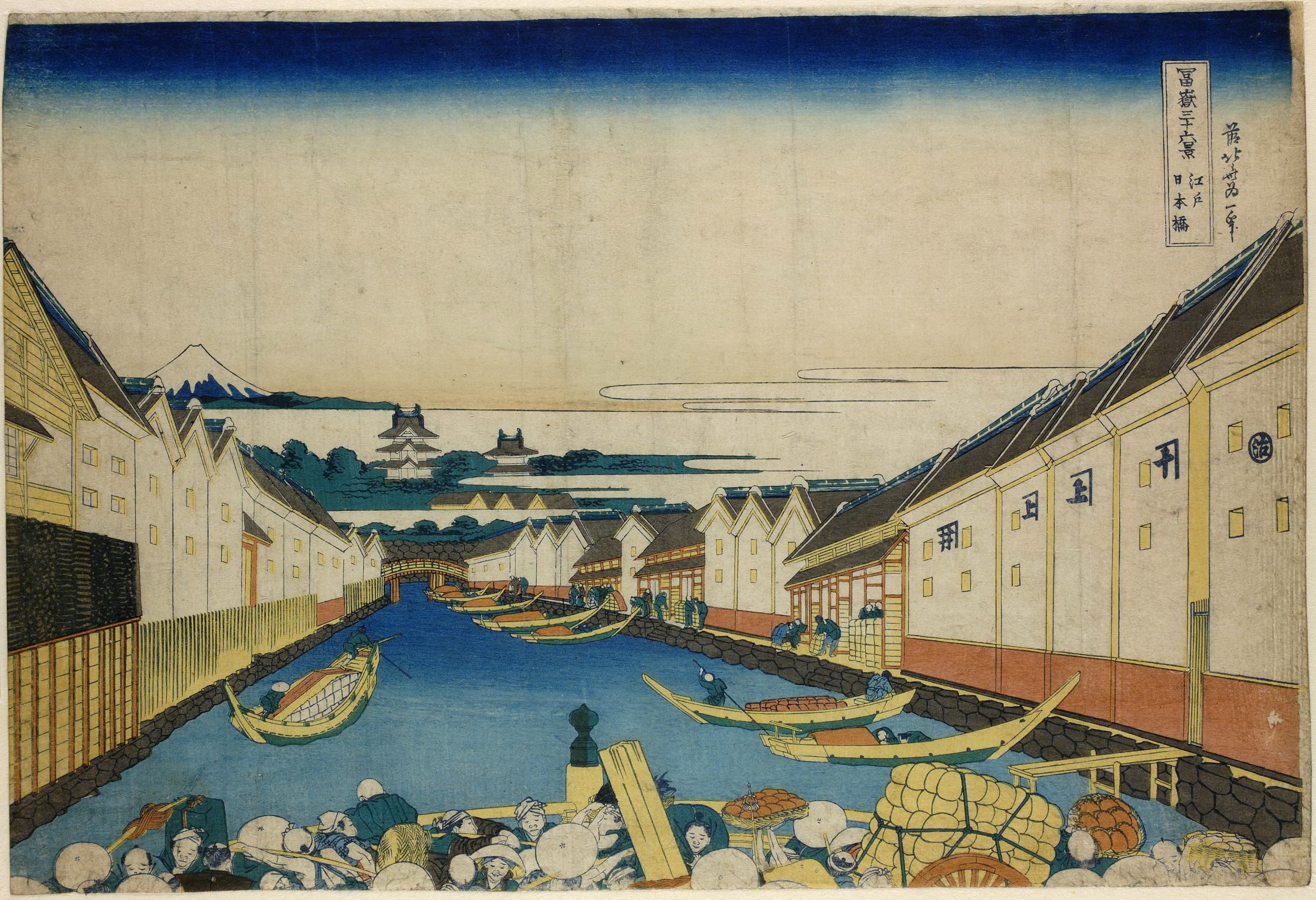
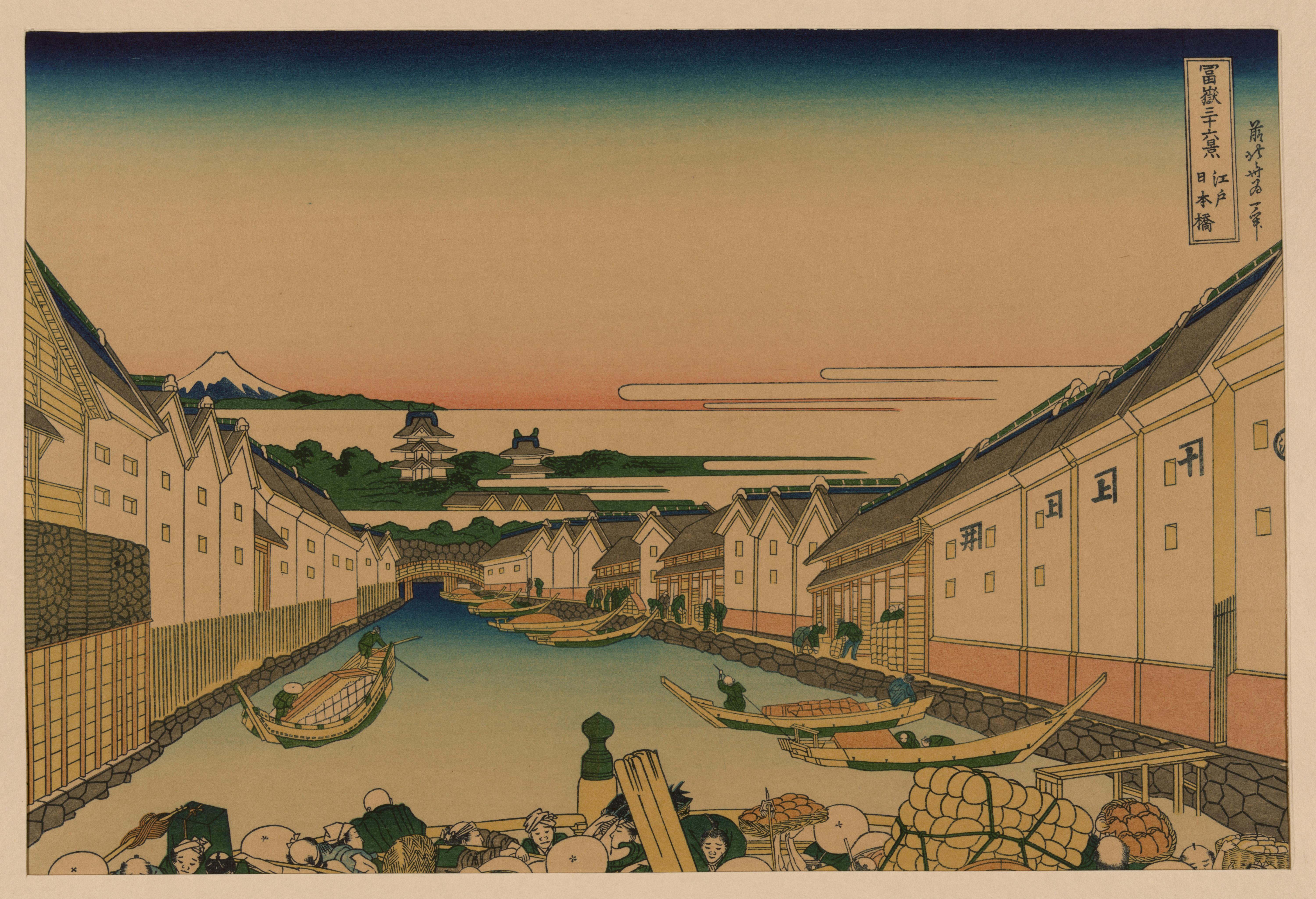
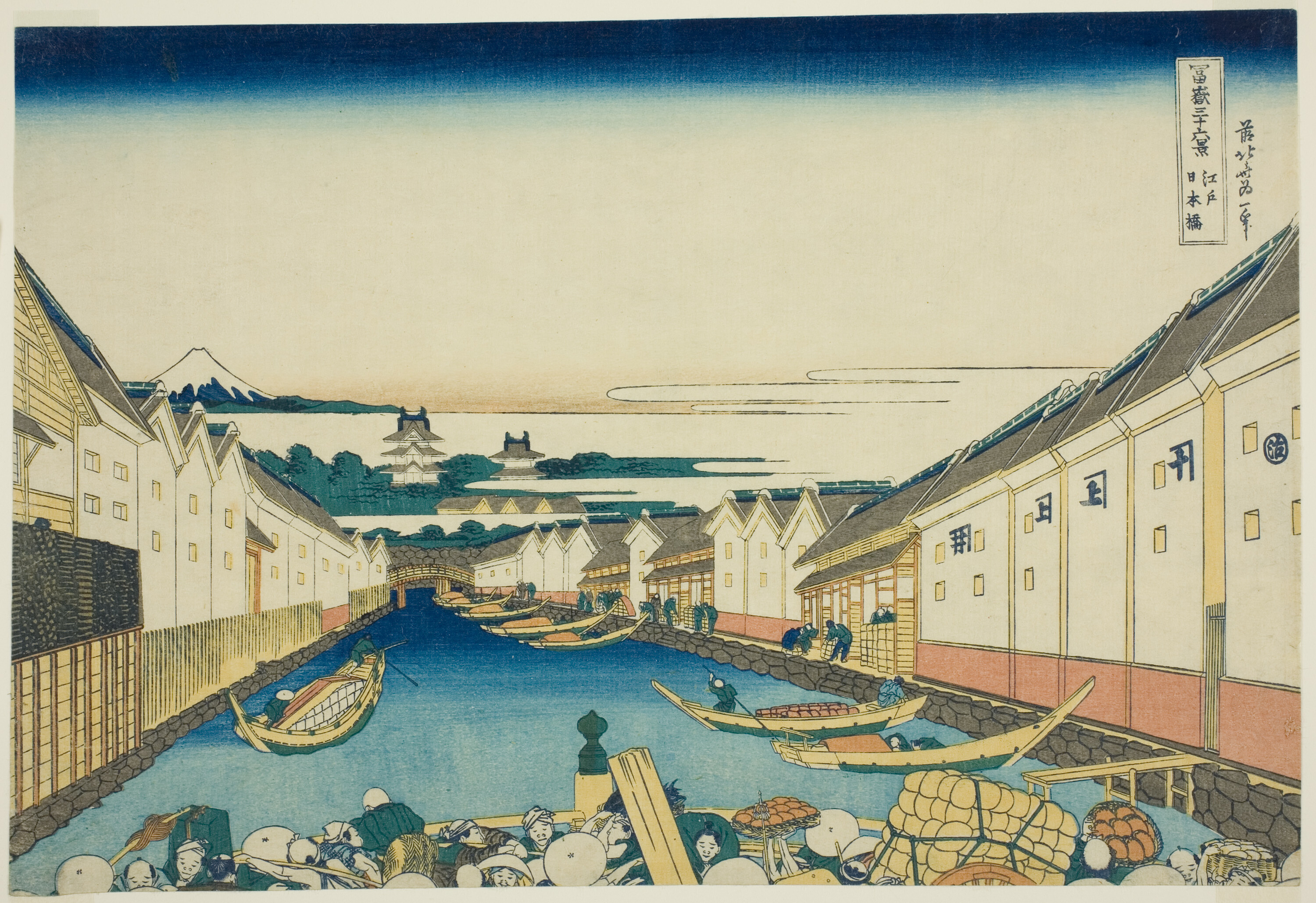
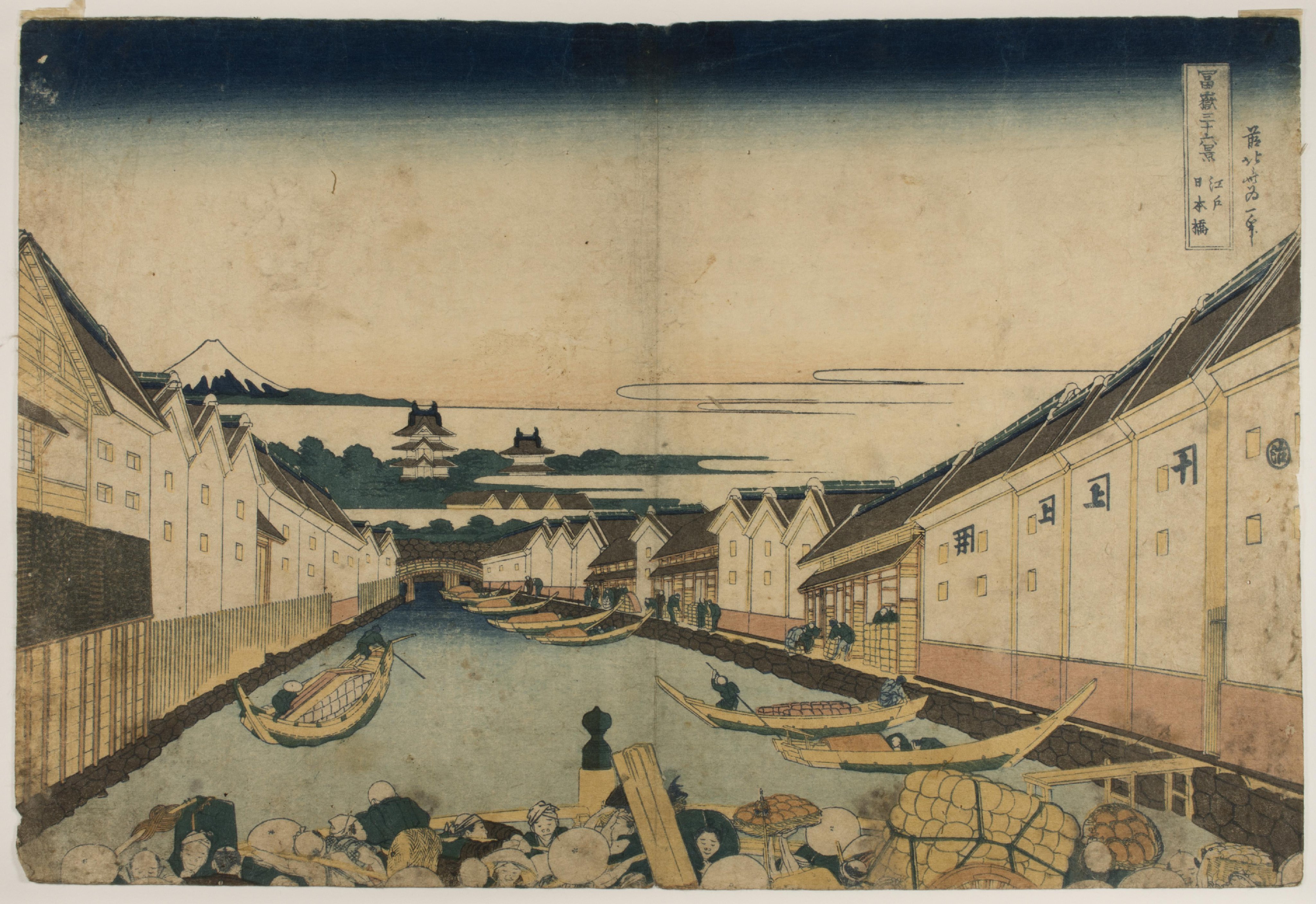
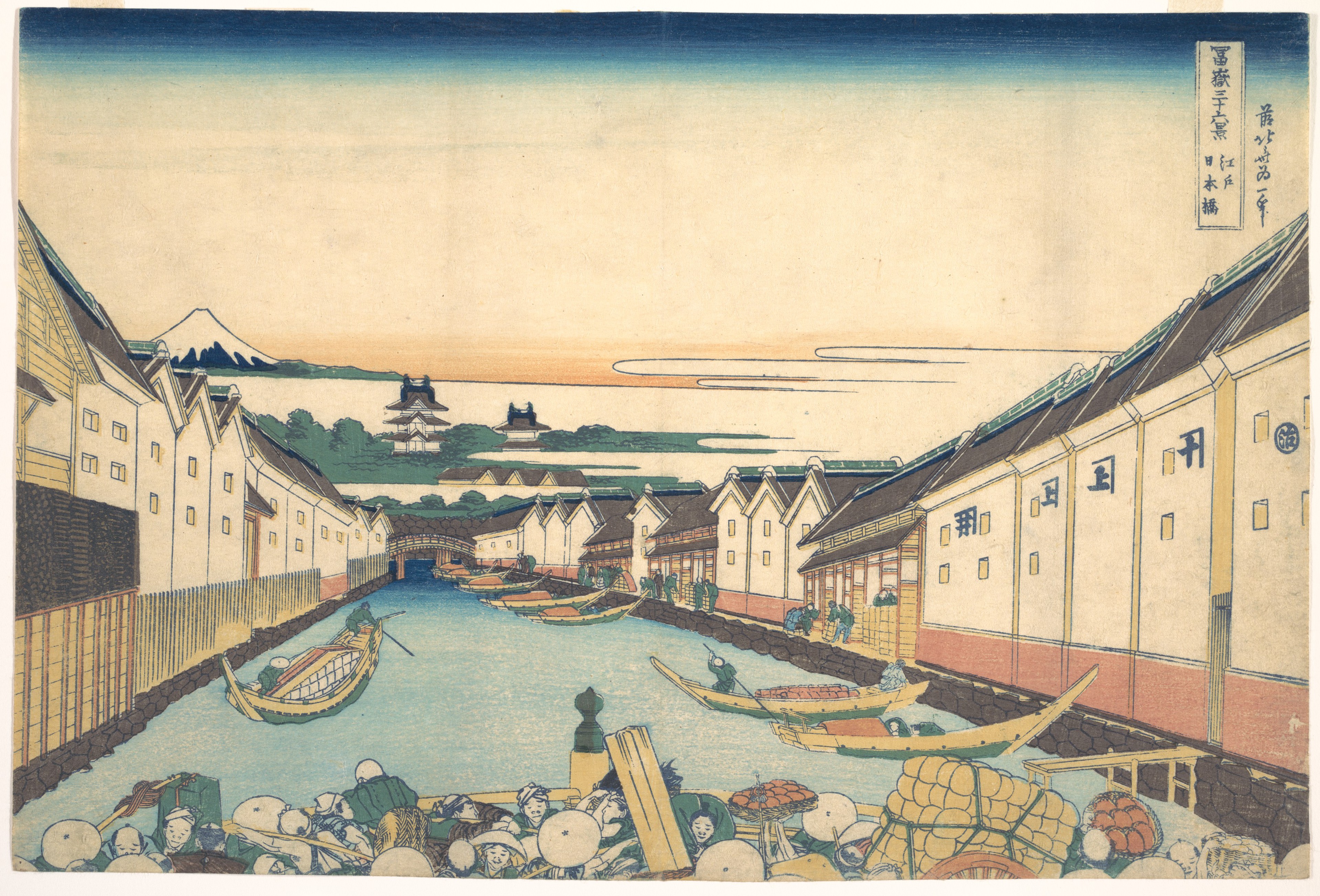
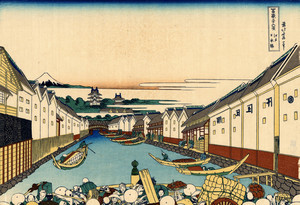
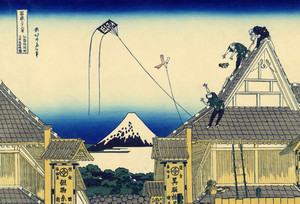
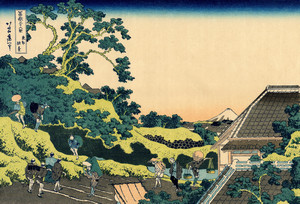
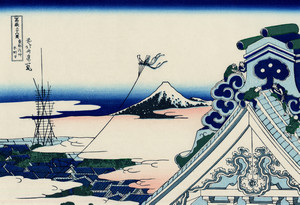
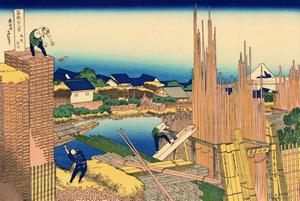
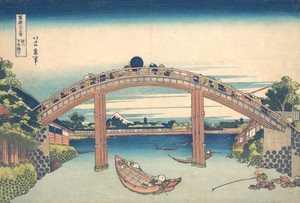
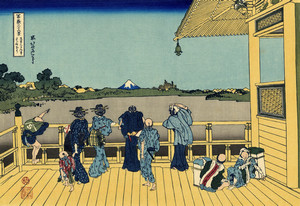
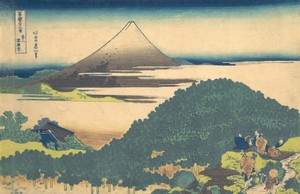
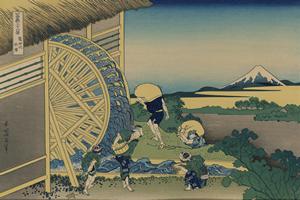
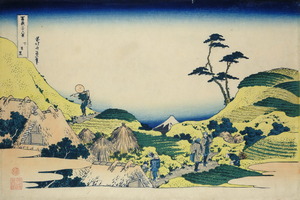
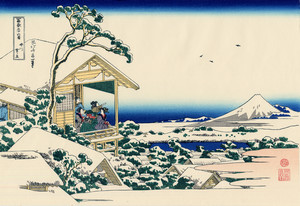
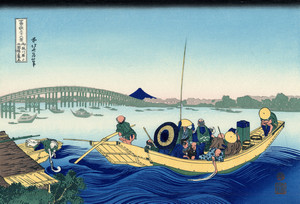
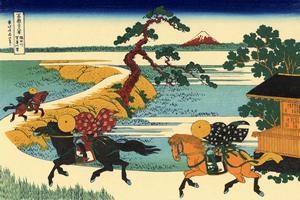
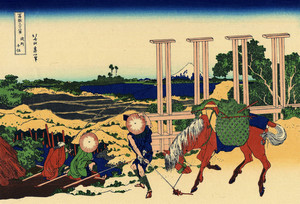
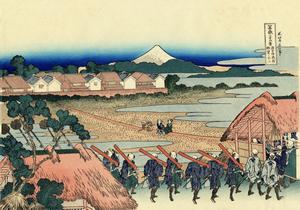
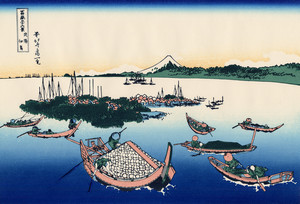
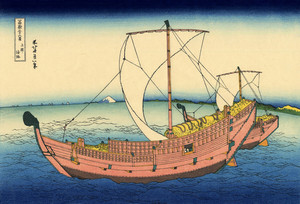
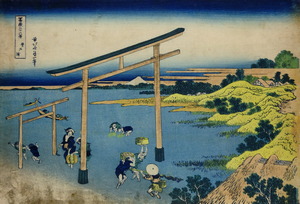
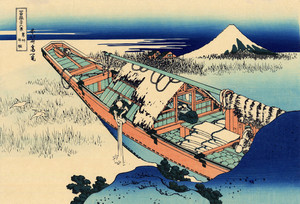
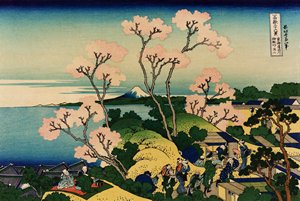
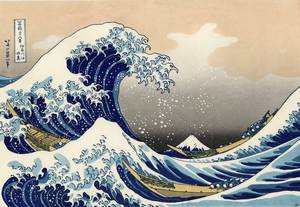
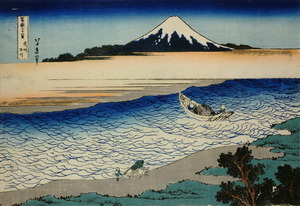
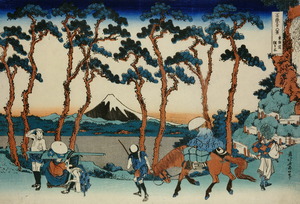
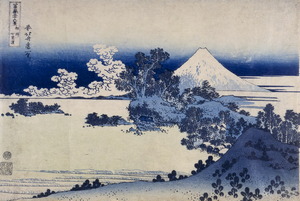
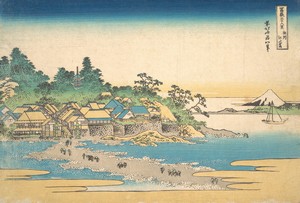
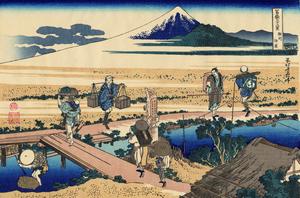
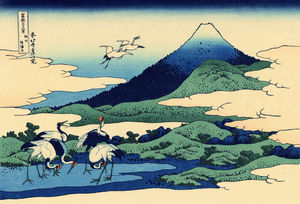
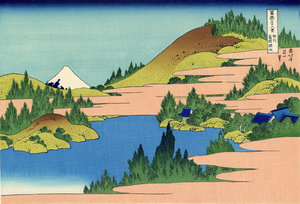
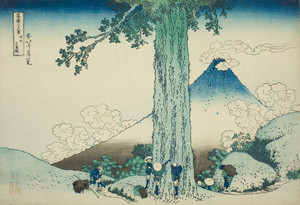
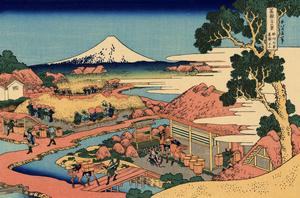
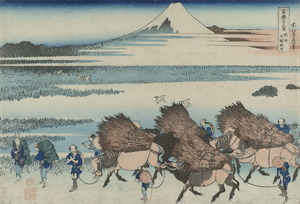
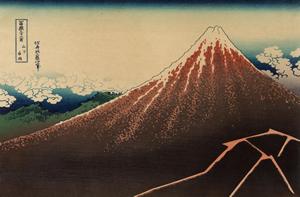
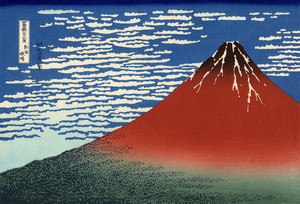
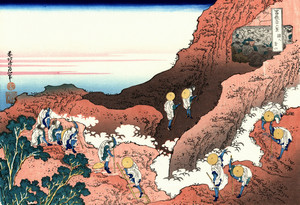
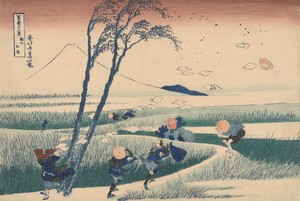
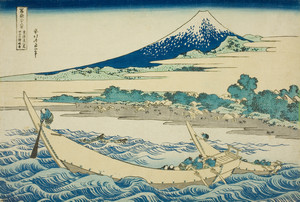
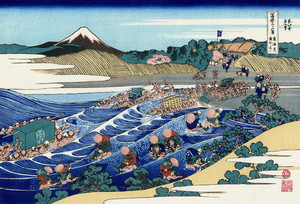
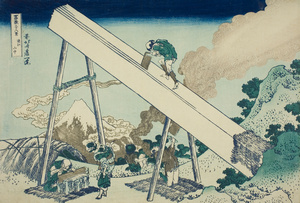
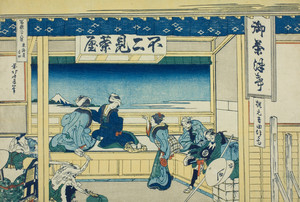
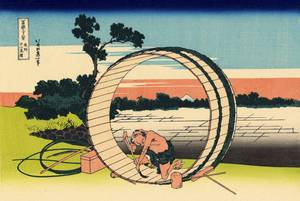
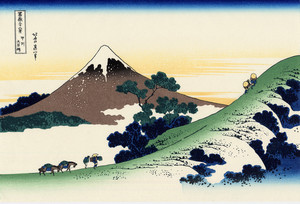
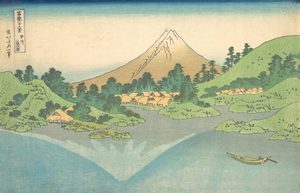
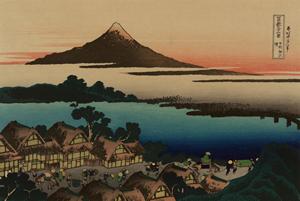
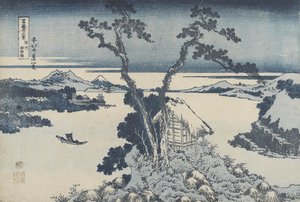
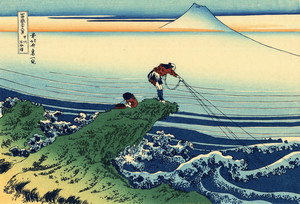
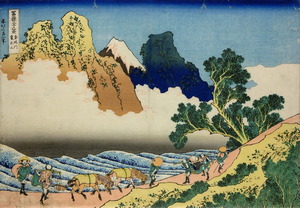





Комментарии
Добавить комментарий